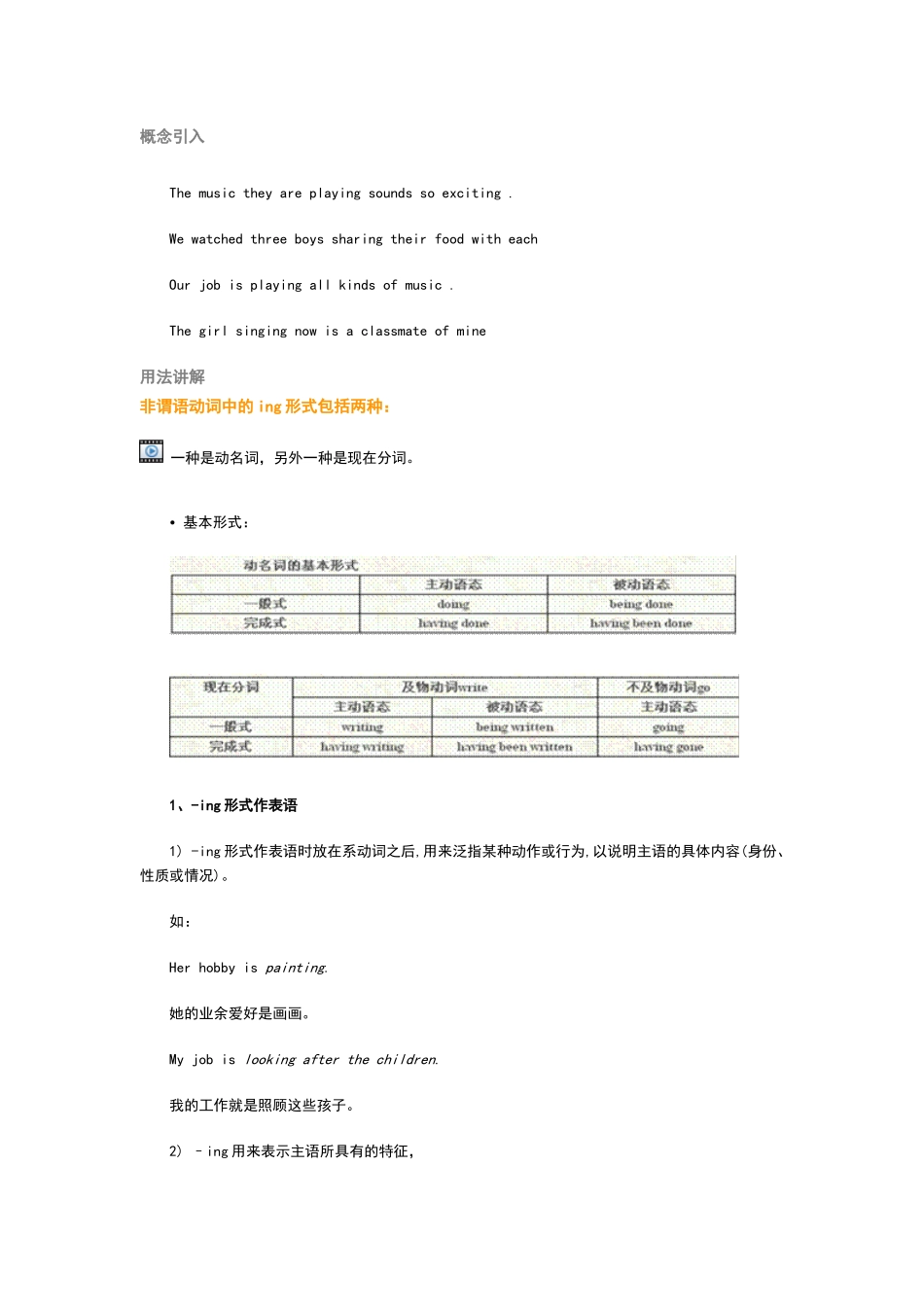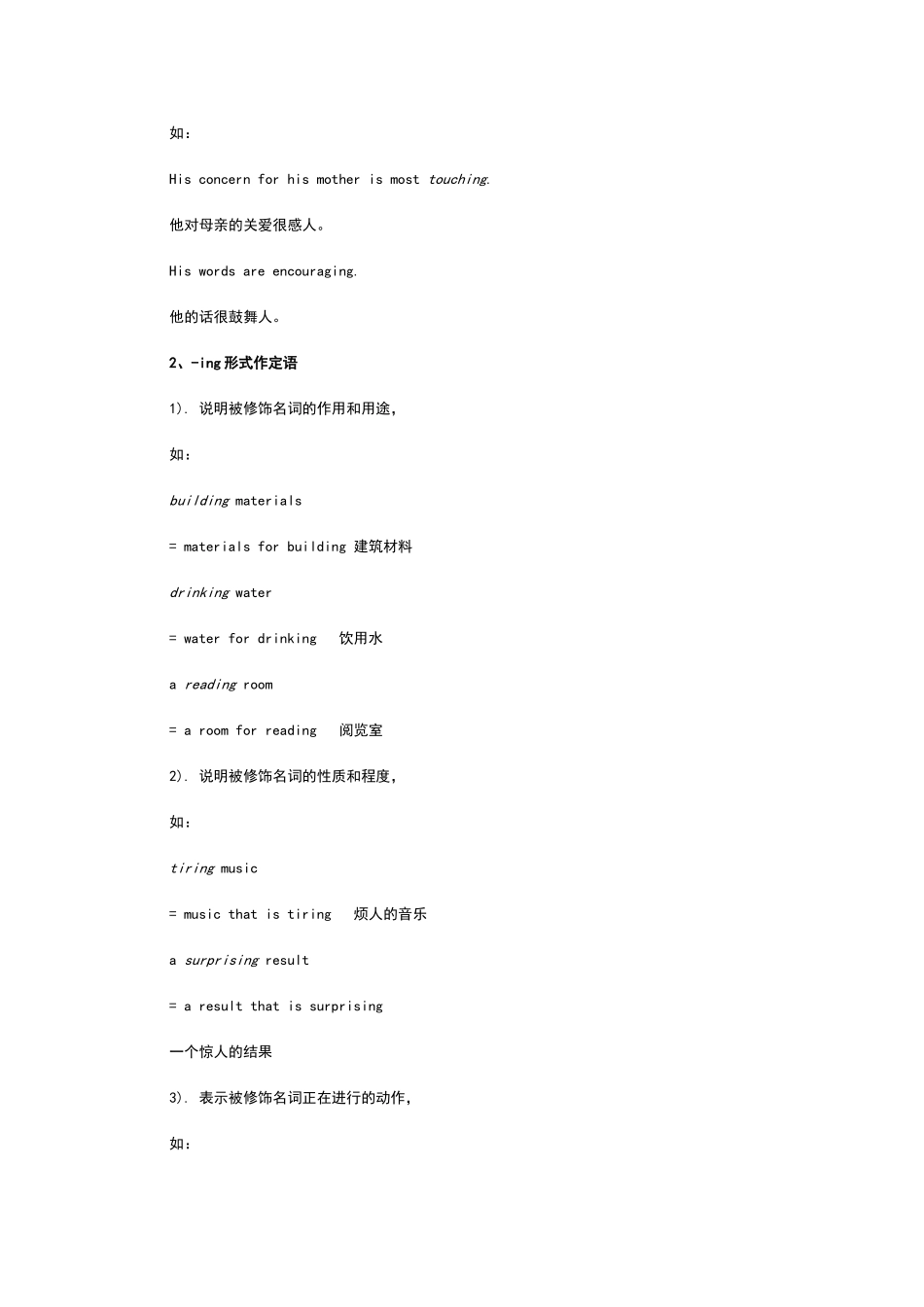概念引入 The music they are playing sounds so exciting . We watched three boys sharing their food with each Our job is playing all kinds of music . The girl singing now is a classmate of mine用法讲解非谓语动词中的 ing 形式包括两种: 一种是动名词,另外一种是现在分词。 基本形式:• 1、-ing 形式作表语 1) -ing 形式作表语时放在系动词之后,用来泛指某种动作或行为,以说明主语的具体内容(身份、性质或情况)。 如: Her hobby is painting. 她的业余爱好是画画。 My job is looking after the children. 我的工作就是照顾这些孩子。 2) –ing 用来表示主语所具有的特征, 如: His concern for his mother is most touching. 他对母亲的关爱很感人。 His words are encouraging. 他的话很鼓舞人。 2、-ing 形式作定语 1). 说明被修饰名词的作用和用途, 如: building materials = materials for building 建筑材料 drinking water = water for drinking 饮用水 a reading room = a room for reading 阅览室 2). 说明被修饰名词的性质和程度, 如: tiring music = music that is tiring 烦人的音乐 a surprising result = a result that is surprising 一个惊人的结果 3). 表示被修饰名词正在进行的动作, 如: 正在做实验的那个学生是我们的班长。 The student making the experiment is our monitor. 我们能看到冉冉升起的太阳。 We can see the rising sun. Attention 1) 单个-ing 形式作定语时, 放在所修饰的名词之前, -ing 形式短语作定语时, 放在所修饰的名词之后, 并且在意思上相当于一个定语从句。 如: They lived in a room facing the street. = They lived in a room that faces the street. 他们住在一间面朝街的房子。 The man standing there is Peter’s father. = The man who is standing there is Peter’s father. 站在那儿的那个人是彼得的父亲。 2) V-ing, 过去分词,不定式做定语时的区别: The student making the experiment is our monitor. They lived in a room facing the street. 正在进行的会议非常重要。 The meeting being held now is very important. ...


